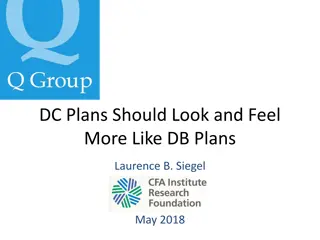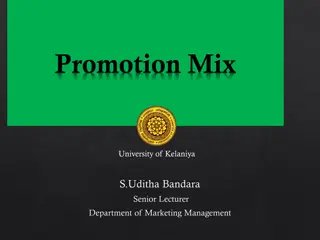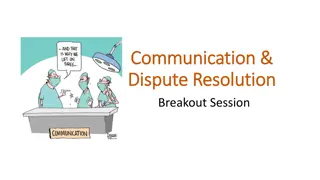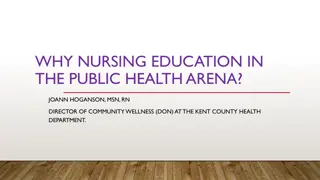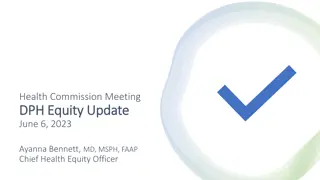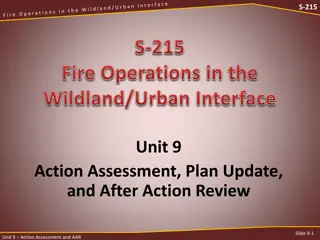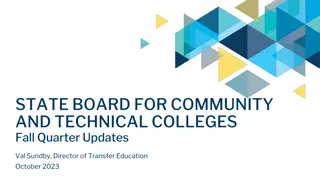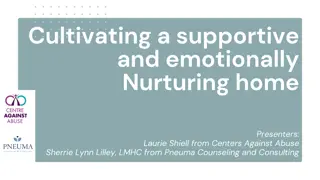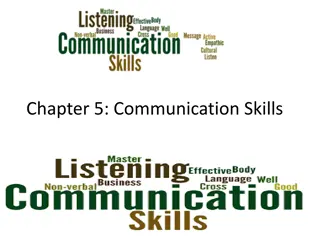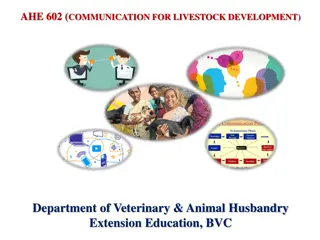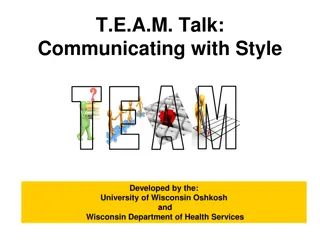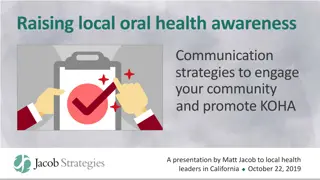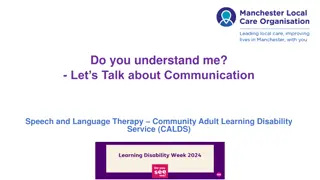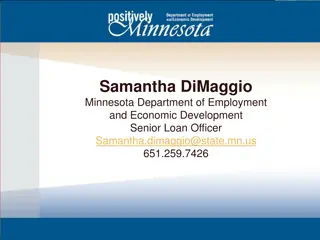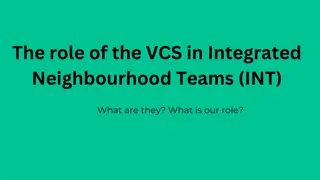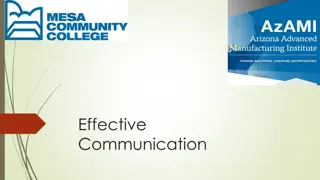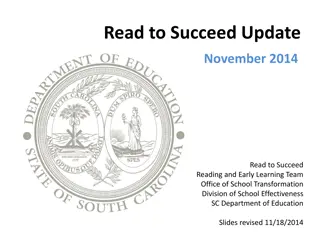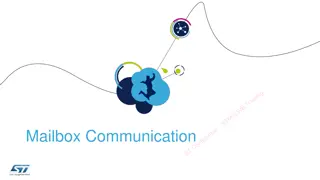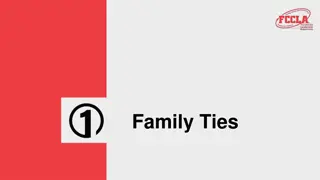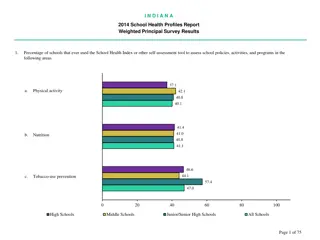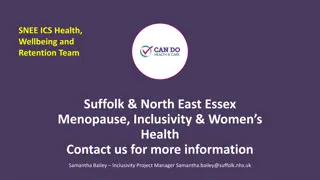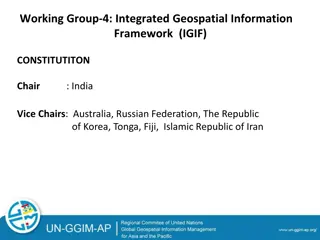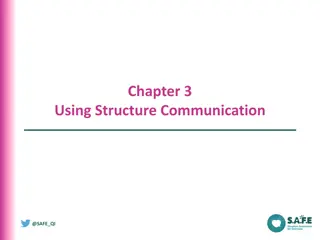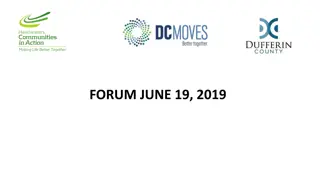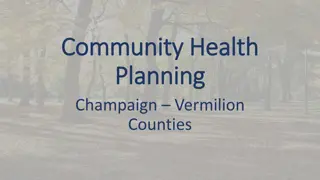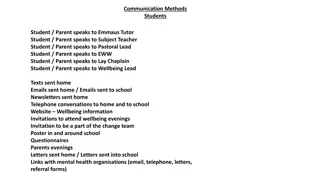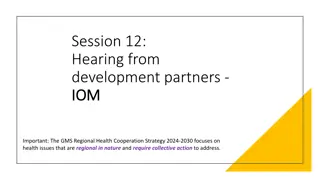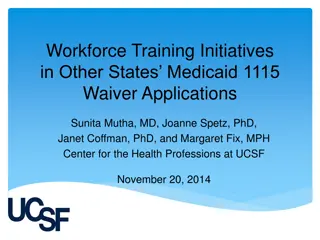Strategies for Effective Communication Plans in Community Health Initiatives
Discover the key elements of building sustainable communication plans for community health initiatives, including creative partnerships, prevention prepared communities, and meaningful messaging delivery methods. Learn how to align stakeholders, reduce duplication, and promote emotional health to reduce mental illness and substance abuse. Explore the spectrum of prevention and communication plan objectives for successful outreach.
Download Presentation

Please find below an Image/Link to download the presentation.
The content on the website is provided AS IS for your information and personal use only. It may not be sold, licensed, or shared on other websites without obtaining consent from the author. Download presentation by click this link. If you encounter any issues during the download, it is possible that the publisher has removed the file from their server.
E N D
Presentation Transcript
Coalition Communication Plans, Creative Partnerships & Sustainability of Effort Click to edit Click to edit Master title style Master title style Joel Hoepfner, B.S., CPC Click to edit Master subtitle style
Building Systems of Prevention Click to edit Click to edit Master title style Master title style resources Reduced duplication of strategies and services Advocacy opportunities Stigma Reduction involving Behavioral Health (SUD & MH) Federal direction = Prevention Prepared Communities Prevention Prepared Communities Align stakeholders, prevention efforts, ROSC and Integrated Care opportunities Identify opportunities to expand and braid funding and Click to edit Master subtitle style
Prevention Prepared Communities (PPCs) Click to edit Click to edit Master title style Master title style families, schools, faith-based organizations, and workplaces take action to promote emotional health and reduce the Creating Communities (or systems) where individuals, Click to edit Master subtitle style likelihood of mental illness, substance abuse, and suicide. (SAMHSA)
Spectrum of Prevention Click to edit Click to edit Master title style Master title style Click to edit Master subtitle style
Communication Plans Click to edit Click to edit Master title style Master title style Click to edit Master subtitle style
Do You Have a Communication Plan? Click to edit Click to edit Master title style Master title style Audiences Audiences (Providers, Youth, Parents, At-Risk Populations, Businesses, General Public) Types of Messaging Types of Messaging (Access to Services, Resources, Data, Publications, Prevention Tips, etc.) Delivery Methods Delivery Methods / Venues / Mechanisms (Emails, Newsletters, PSAs, Press Releases, Billboards, Facebook, TikTok, media outlets, etc.) Frequency and Duration Frequency and Duration Responsible Parties Responsible Parties Communication Plans Include: Objectives Objectives / Intended Outcomes Click to edit Master subtitle style
Communication Plan Objectives Click to edit Click to edit Master title style Master title style Increased awareness of problem or issue Increased awareness of community resources or prevention tips Increase in potential partnerships / coalition membership What would you like to accomplish? Increased referrals to services / community education / training opportunities Click to edit Master subtitle style What types of messages do you share? What is your go to delivery method?
What is a Brand? What is Brand Identity and Why is it Important? Click to edit Click to edit Master title style Master title style comprised of a name, tagline, logo or symbol, design, brand voice, and more. A brand identity brand identity is made up of what your brand says, what your values are, how you communicate your product, and what you want people to feel when they interact with your company. Essentially, your brand identity is the personality of your business or coalition and a promise to your customers. A brand brand is a feature or set of features that distinguish one organization or entity from another. A brand is typically Click to edit Master subtitle style
Saturation of Message Click to edit Click to edit Master title style Master title style generating awareness and conversation generating awareness and conversation around a particular issue or brand, that nearly every person in the target area or market knows, follows, or is engaged by the issue or brand. Do you know your Brand? What are you known for locally? Saturation of message is key! Brand saturation is a state that is achieved when an agency or company is so effective at is so effective at Click to edit Master subtitle style
Creative Partnerships to Enhance Prevention Efforts Click to edit Click to edit Master title style Master title style Click to edit Master subtitle style
PARTNERSHIPS: Unlimited / Endless / Infinite / Untapped Potential Act as Change Agents (to drive system change) Click to edit Click to edit Master title style Master title style Enhance potential funding opportunities, resources, staffing, co-sponsorship and co-branding, promotion of effort and initiatives, etc. Can include business, industry, hospitals, faith based, regional and statewide associations, coalitions & task forces, boards and health and human service agencies Click to edit Master subtitle style
Partnerships: Where to Begin? Click to edit Click to edit Master title style Master title style 3. Ask what s in it for them? Why they might partner? 4. Who do we know at this organization? 5. Who will contact them? 6. Identify Contact information 7. Know and practice your Pitch Potential Partners List Potential Partners List 1. List potential partner organizations 2. Identify resources they might provide? Click to edit Master subtitle style
Levels of Collaboration Click to edit Click to edit Master title style Master title style prevention efforts. Some may be willing to help out with specific tasks, while others may be willing to take on leadership roles. Some participation options for prevention stakeholders are included on the next slide. Potential community partners will have varying levels of interest and/or availability to participate in Click to edit Master subtitle style
Levels of Collaboration Click to edit Click to edit Master title style Master title style ours. ) Networking Networking. . Stakeholders share what they are doing during interagency meetings. They talk about community issues in which they all have a stake or communicate about existing programs, activities, or services. (For example, Let s talk and share information. ) Participation Options Participation Options No No involvement. involvement. Stakeholders engage in separate activities, strategies, and policies. (For example, You do your thing, we ll do Click to edit Master subtitle style
Levels of Collaboration Click to edit Click to edit Master title style Master title style applications, co-sponsor trainings or professional development activities, and/or exchange such resources as technology expertise or meeting space. (For example, I ll support your program, and you ll support mine. ) Coordination. Coordination. Stakeholders serve together on event planning committees and community boards or implement programs and services together. (For example, Let s partner on an event. ) Participation Options (Continued) Participation Options (Continued) Cooperation. Cooperation. Stakeholders publicize one another s programs in agency newsletters, write letters in support of one another s grant Click to edit Master subtitle style
Levels of Collaboration Click to edit Click to edit Master title style Master title style data collection systems; partner on joint fundraising efforts; pool fiscal or human resources; and create common workforce training systems. (For example, Let s work together on a comprehensive plan to address the issue. After all, our missions overlap. ) Participation Options (Continued) Participation Options (Continued) Collaboration. Collaboration. Stakeholders create formal agreements (e.g., memoranda of understanding or contracts). They develop common Click to edit Master subtitle style
Brainstorm New Partnerships (Activity) In small or as a large group, please compile a list of new potential partners in your area Click to edit Click to edit Master title style Master title style or across the state that can enhance your efforts and provide a mutually exclusive benefit. (10 minutes) Click to edit Master subtitle style
SOCIAL MEDIA - Amplify Message & Enhance Partnerships Our Facebook Toolkit has been shared and utilized across the state and provides ready made behavioral health Click to edit Click to edit Master title style Master title style prevention related posts and social media content for our partners, networks and community to share. The interest, utility and promotion of this tool continues to grow and expand. Download available at http://ceicmh.org/about-us/publications & scroll down to Facebook Toolkit Click to edit Master subtitle style
Facebook Toolkit - Purpose Click to edit Click to edit Master title style Master title style & MH) 2.) Promote local resources and community education & training opportunities 3.) Reduce stigma around behavioral health issues The intent is threefold: 1.) Increase awareness of behavioral health issues (SUD Click to edit Master subtitle style Provides the EASY EASY button for our community networks!
Annual Report Template Activity Click to edit Click to edit Master title style Master title style improve the health of their communities. They are an effective promotional, communications and reporting tool. Please take a minute to review the Annual Report Instruction template provided and begin filling in the sections or become familiar with what is needed to complete. (Group Activity - 5 min) Annual Reports allow agencies and coalitions to highlight the programs, partnerships and investments made to Click to edit Master subtitle style
YEAR END OUTCOME EVALUATION REPORT INSTRUCTIONS: It is recommended that all coalitions include the following elements in any Year End Outcome Evaluation Reports. SECTIONS OF YEAR END OUTCOME EVALUATION REPORT: 1.A brief introduction of the county, the coalition, and the mission / vision, including: a.Brief overview of the current county prevention system i.Include descriptions of linkages and collaborative partners b.Current community readiness to support prevention efforts as well as ROSC and integration efforts 2.Brief overview of funding streams, current prevention programming, and staffing Click to edit Click to edit Master title style Master title style (including qualifications) 3.Process outcomes, including completed strategies and objectives. This section should also include: a.Estimated completion percentage of milestones b.Major successes, achievements, and stories c.References to important publications, products, media pieces, etc. 4.Behavioral outcomes/achievements involving changes in major data indicators tracked over time and identified in current community logic models: a.Immediate behavioral outcomes achieved by prevention programs and strategies b.Intermediate behavioral outcomes achieved (if any) c.Long-term behavioral outcomes achieved (if any) 5.System outcomes, including: a.New MOU s, system alignment achievements, ROSC activity, and integration efforts, etc. 6.Coalition evaluation, including: a.Strengths and weaknesses of the coalition b.Coalition Effectiveness Evaluation Matrix Summary c.Coalition Site Review Summary of Findings d.Specific opportunities to excel 7.Barriers, challenges, and external factors involved in this work 8.Future plans and identified next steps Click to edit Master subtitle style
Sustainability Checklist Individually or in small groups, please work through Click to edit Click to edit Master title style Master title style the Sustainability Checklist and identify recommendations and next steps within each section, 3 priorities going forward and any additional considerations for discussion. (Small Group Activity 10 minutes) Click to edit Master subtitle style
COALITION SUS SUSTAINABILITY PLAN AND CHECKLIST COALITION: _______________________________________ DATE: __________________ Click to edit Click to edit Master title style Master title style Activity Sustainability Plan and Checklist Yes No Unsure? Sustainability Criteria Strong Membership and Involved Partners New members and volunteer groups are actively recruited, oriented, trained, and engaged (orientation process, brief new member mtg, etc.) The coalition promotes relationships and formal partnerships among involved members and volunteer groups (co-branding, sponsorships, vendor opportunities, resource sharing, etc.) Coalition members and volunteer groups are provided clear roles and expectations of their involvement within an MOU or other partnership agreement (role delineation, role clarity, etc.) Click to edit Master subtitle style Recognition and rewards are provided to coalition members, volunteer groups, community leaders, businesses, community residents, and other partners (certificates, awards, annual celebration, etc.) Recommendations / Next Steps: Transparent and Considerate Community Planning Process The coalition has or can obtain the skills to implement the Strategic Planning Framework (SPF) (Evaluator, consultant, or data (epi) staff) The coalition develops and follows annual or biennial action plans to implement its strategies (ideally derived from the SPF steps) The coalition works actively toward creating the 5 key products and deliverables of the SPF (Needs Assessment, Resource Assessment, Strategic Plan, Action / Implementation Plan, and Year End Outcome Evaluation Report)
Sustainability Worksheet Questions to ask when planning for sustainability 1.What collaborative structures are in place to support the functions of your prevention efforts? ________________________________________________________ 2.What other programs, groups or services are involved in this collaborative effort and at what level? ________________________________________________________ Click to edit Click to edit Master title style Master title style _________________________________________________________ 6.How have you maintained consistency in accessing human, in-kind and financial resources? _________________________________________________________ 3.Is there an established communication plan developed to connect the work of the coalition to your community and provider networks? __________________________________________________________________ 4.What policies and procedures have you developed to foster sustainability? _________________________________________________________ 5.How have leadership roles and responsibilities been effectively developed? Click to edit Master subtitle style 7.What plan(s) are in place to facilitate the acquisition of resources in the future? _________________________________________________________ 8.What kind of expertise is available to help you sustain your prevention efforts? _________________________________________________________ 9.How is your prevention work aligned with the identified needs of your priority population? _________________________________________________________ How have you fostered ownership in the implementation of your prevention plan? _________________________________________________________ 10. What process and / or outcome evaluation measures are in place to assess the quality, effectiveness and appropriateness of your coalition s functioning, planning, programming and implementation? _________________________________________________________ 11.
Final Thoughts Click to edit Click to edit Master title style Master title style One of SAMHSA s major goals is to create prevention prepared communities (systems) where individuals, families, schools, workplaces, and the communities in which they live take action to promote take action to promote emotional health and wellbeing, and reduce and reduce mental illness, substance abuse, and suicide across the lifespan. mental illness, substance abuse, and suicide across the lifespan. To also be creative, action oriented, partnership driven, effective and intentional in our work with community coalitions Our collective interest should be: To build and sustain county systems of SUD/BH prevention that represent and reflect prevention prepared communities prevention prepared communities Click to edit Master subtitle style emotional health and wellbeing, prevent prevent
Contact Information Click to edit Click to edit Master title style Master title style Community Mental Health Authority of Clinton, Eaton, Ingham 812 East Jolly Rd. Lansing, MI 48911 Office (517) 346-8465 or cell (989) 859-7490 hoepfner@ceicmh.org or joelhoepfner14@gmail.com Joel Hoepfner, CPC Prevention & Outreach Coordinator Click to edit Master subtitle style





